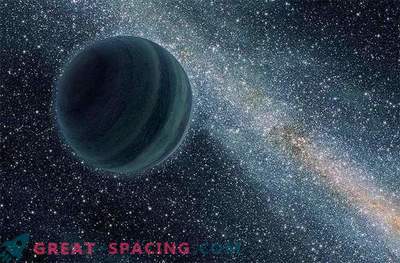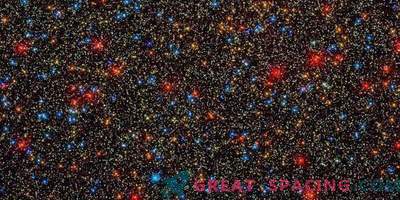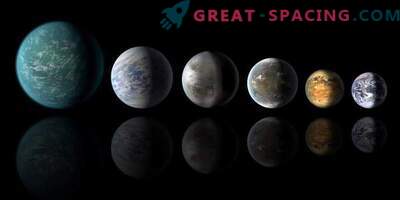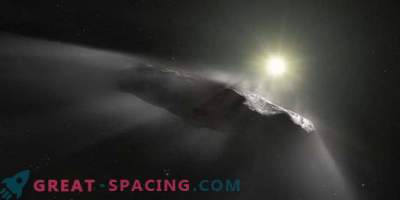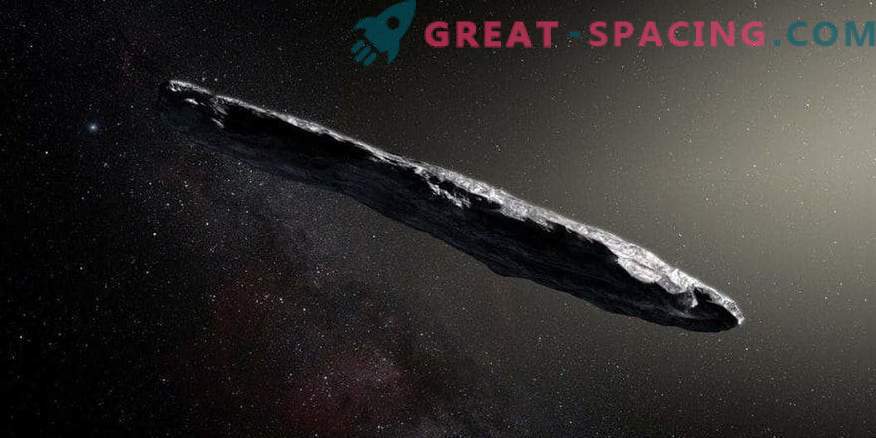
A group of scientists from the Institute of Astronomy. Max Planck tracked Oumuamua’s interstellar object with several possible host stars. The object was first noticed at the end of 2017 - the first case of observing an astronomical body from another system that visited ours. The data from the Gaia satellite helped to find four promising stars, near which Oumuamua could have formed more than a million years ago.
The discovery of 2017 was truly an amazing event. However, Oumuamua was noticed when he was already leaving the solar system. But scientists could use ground and space telescopes to determine the movement of an object. Now the researchers were able to identify four possible host stars, near which he could appear.
New significant ingredient
Previously tried to find a home for Oumuamua, but then there was no important component. In June 2018, we found out that the orbit of an object in our system does not relate to free fall (it does not move only due to gravity). Instead, a certain acceleration was seen when Oumuamua approached the Sun. Most likely, he has similarities with comets - ice with sufficient heating creates a gas that accelerates the body as a weak rocket engine. Degassing could not be seen in the images, but it is noticeable when tracking back to the orbit. The new study takes into account how Oumuamua’s orbit changed as the object approached the Sun. This allowed us to derive an accurate estimate of the direction of arrival and the speed of entry into the solar system.
Gaia Data Treasures
We understand how Oumuamua entered our system, but what about the influence of other stars? After all, they could change its trajectory. For this, scientists used the invaluable data of the ESA Gaia mission, which came out only in April of this year (DR2). This release contains accurate information about the location, movement in the sky and parallax for 1.3 billion stars. For 7 million of them, there is also information about the radial velocity (movement to or from us). With the SIMBAD database, it was possible to include another 220,000 stars.
Then, astronomers looked at an approximate backward movement: a simplified scenario, where Oumuamua and all the stars move in straight lines at a constant speed. From here it was possible to choose 4500 stars who have become promising candidates for closer contact with the object. Then they began tracking the past movements of the candidates and Oumuamua using a smoothed version of the gravitational effect.
Search for a native star
Many researchers assumed that Oumuamua was pushed out of the native system during the period of the planetary formation phase. This means that the orbit of the object should lead us to the original point or bring it closer to the native star. In addition, the relative speed of Oumuamua and the native star should be relatively slow (as a rule, objects are not ejected at high accelerations). Thus it was possible to find four stars, which are possible candidates at home for Oumuamua. These are all dwarfs representatives. The closest to Oumuamua (a million years ago) will be HIP 3757. But scientists are confused by the relatively high speed of 25 km / s. Another candidate is HD 292249, which resembles the Sun and is close along the trajectory 3.8 million years ago. The other two could meet 1.1 and 6.3 million years ago, but there is little information about them.
Other Destinations
These four stars seem plausible candidates. To throw away Oumuamua, the system had to create a suitable giant planet. But around the candidates so far have not noticed such a world. Although these stars are still not studied in detail, so in the future the situation may change. In 2021, the third data release of Gaia will be released, which will provide additional data on new stars. In the meantime, the search for the homeland of Oumuamua continues.





